This post is also available in: Español
Manzanillas en miel also known as manzanillas en dulce is a Guatemalan dessert made with the manzanilla fruit (tecojote or Mexican hawthorn). It is also popular in El Salvador where it is known as dulce de manzanilla. This delicious traditional Guatemalan food is usually enjoyed during Semana Santa or Holy Week and Lent.
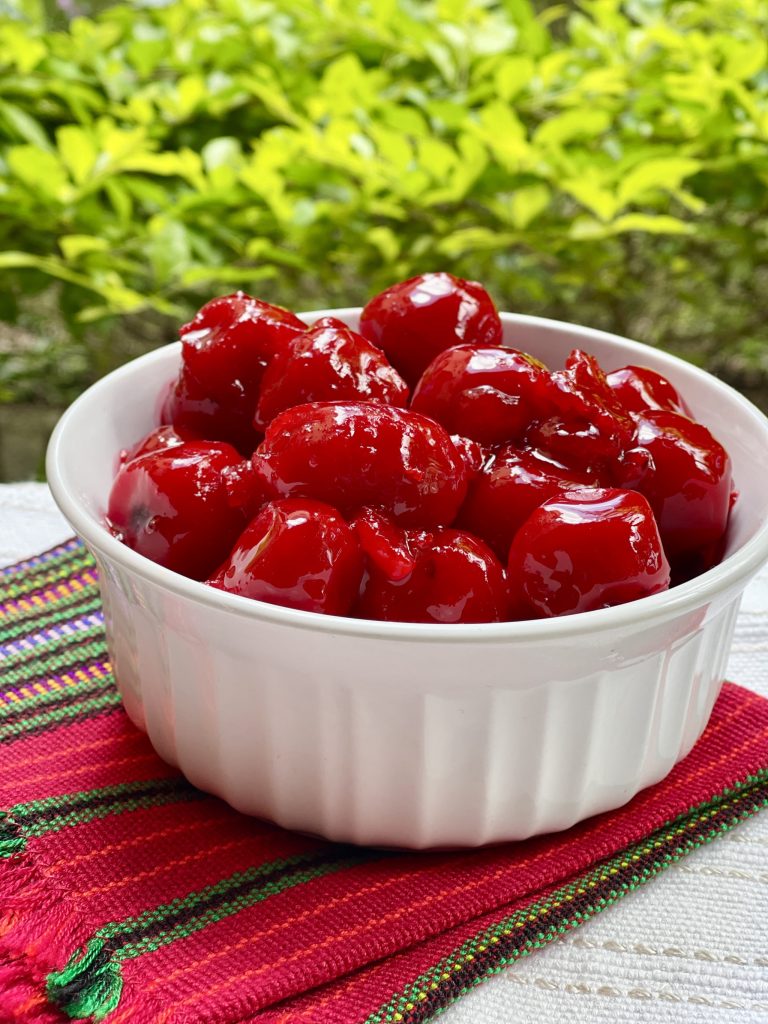
Today I’m sharing an easy recipe for making manzanillas en miel at home just in time for Semana Santa. If you are like me, living away from Guatemala but always missing it, this dessert is sure to bring back memories of times with family enjoying the Semana Santa vacation. If you are not familiar with manzanillas or tecojotes you are in for a treat! These delicious fruits are easy to find in Guatemala and Mexico and in the USA you can usually find them in specialty produce stores and in Mexican or Latino grocery stores.
Manzanillas en miel: a traditional Semana Santa dish
Manzanillas en miel are traditionally prepared during Semana Santa. Along with other Guatemalan desserts like molletes, torrejas, alfajores, and the delicious garbanzos en miel, manzanillas en miel are tightly connected to traditions during Cuaresma and Lent.
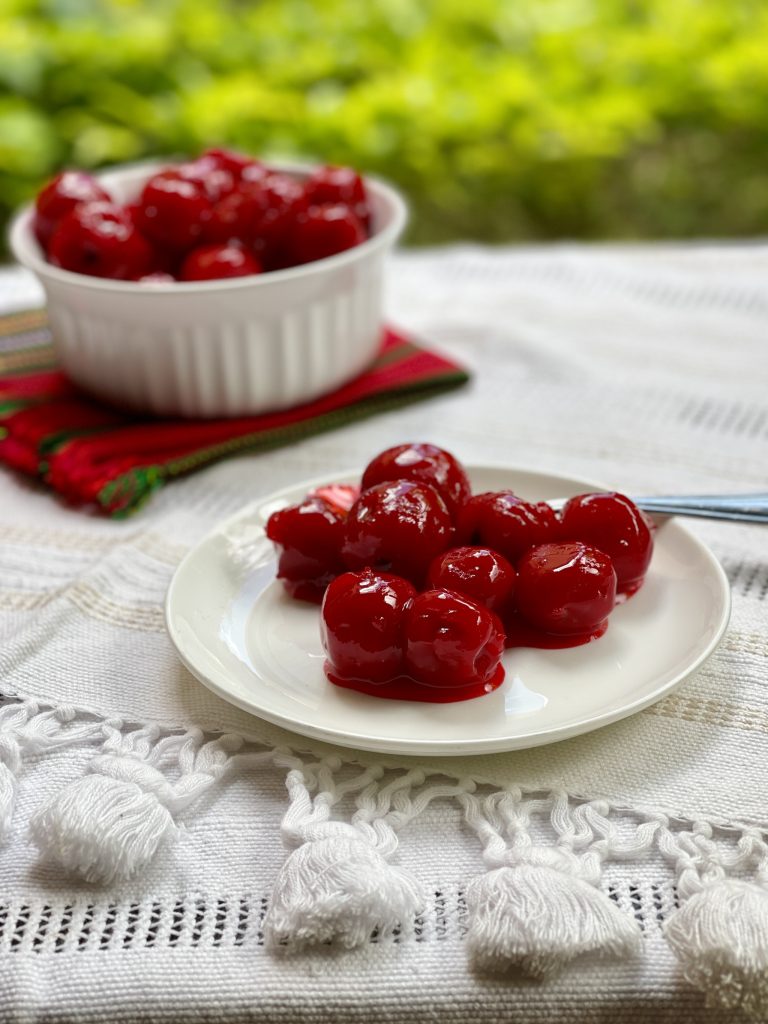
These Guatemalan Semana Santa desserts are the perfect sweet treat to follow Lent dishes like bacalao a la Vizcaína, curtidos, ichintal envuelto en huevo and tamalitos blancos or tamalitos de viaje. Check out my post about traditional Guatemalan Semana Santa foods to get all the recipes for these dishes.
What are manzanillas (tecojotes)?
Manzanilla, scientifically known as Crataegus mexicana, is a fruit-bearing tree native to Central America, including Guatemala and Mexico. The tree can grow up to 25 feet tall and produces small, apple-like fruits called manzanillas, which are also commonly known as “tejocotes” in Mexico and as Hawthorn berry in the US. Manzanilla fruits have a slightly sweet and tart taste, often described as a cross between an apple and a crabapple. They are rich in antioxidants, fiber, and vitamin C, making them a nutritious addition to any diet.
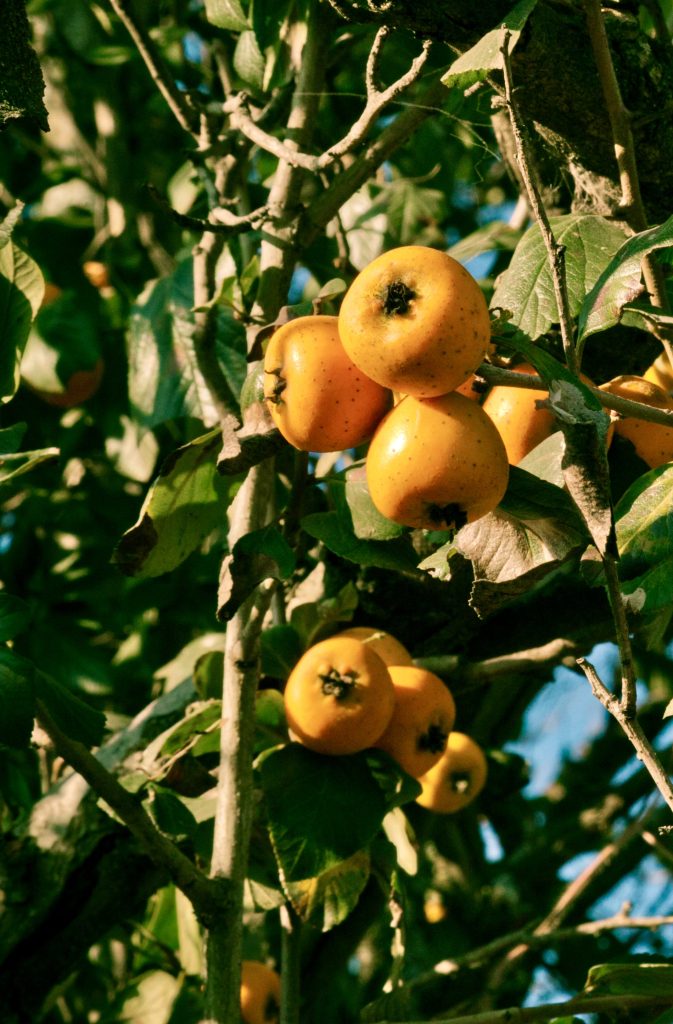
The fruits are an essential part of Guatemalan holiday traditions, particularly during the Christmas season when they are used to decorate homes and Christmas trees. You will usually find them stung into long garlands in Guatemalan markets during the holiday season.
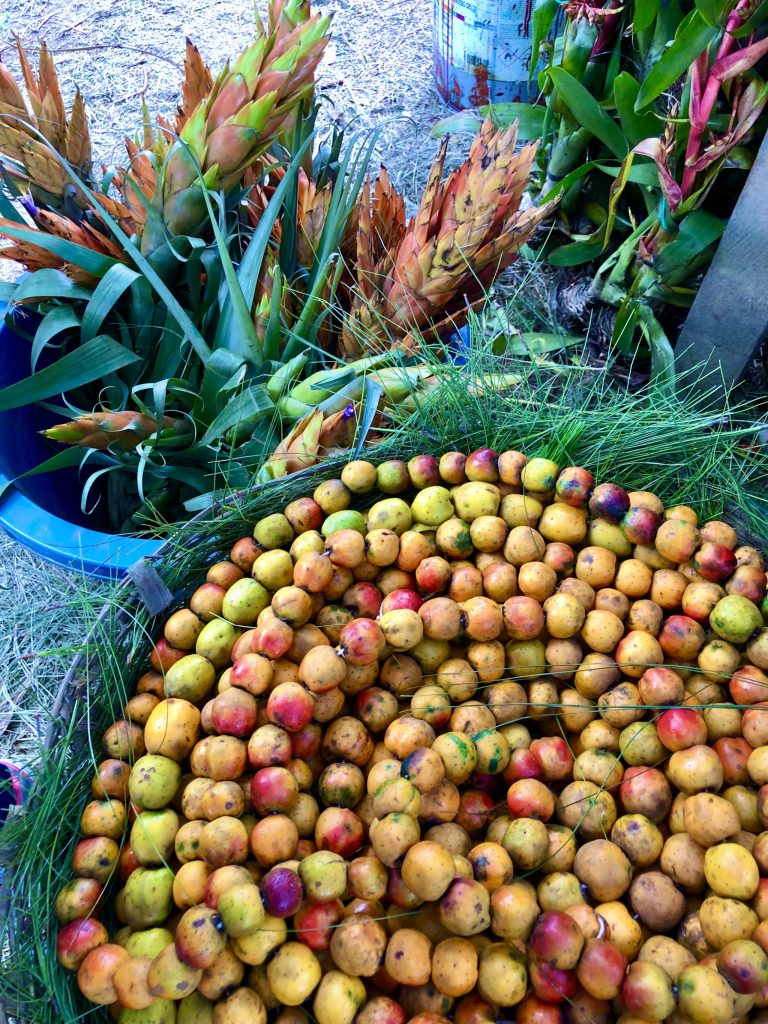
In Mexico, manzanillas are used as a decorative element during the Day of the Dead celebrations and are placed on altars and graves as offerings to the deceased. The manzanilla’s association with these important cultural celebrations highlights its significance in the cultural and culinary traditions of both Mexico and Guatemala.
Tecojotes are not only used in desserts but also to make jams, jellies, and other preserves. Manzanillas are are also one of the main ingredients for making ponche de frutas. A hot fruit punch that is traditional during the holiday season both in Guatemala and in Mexico.
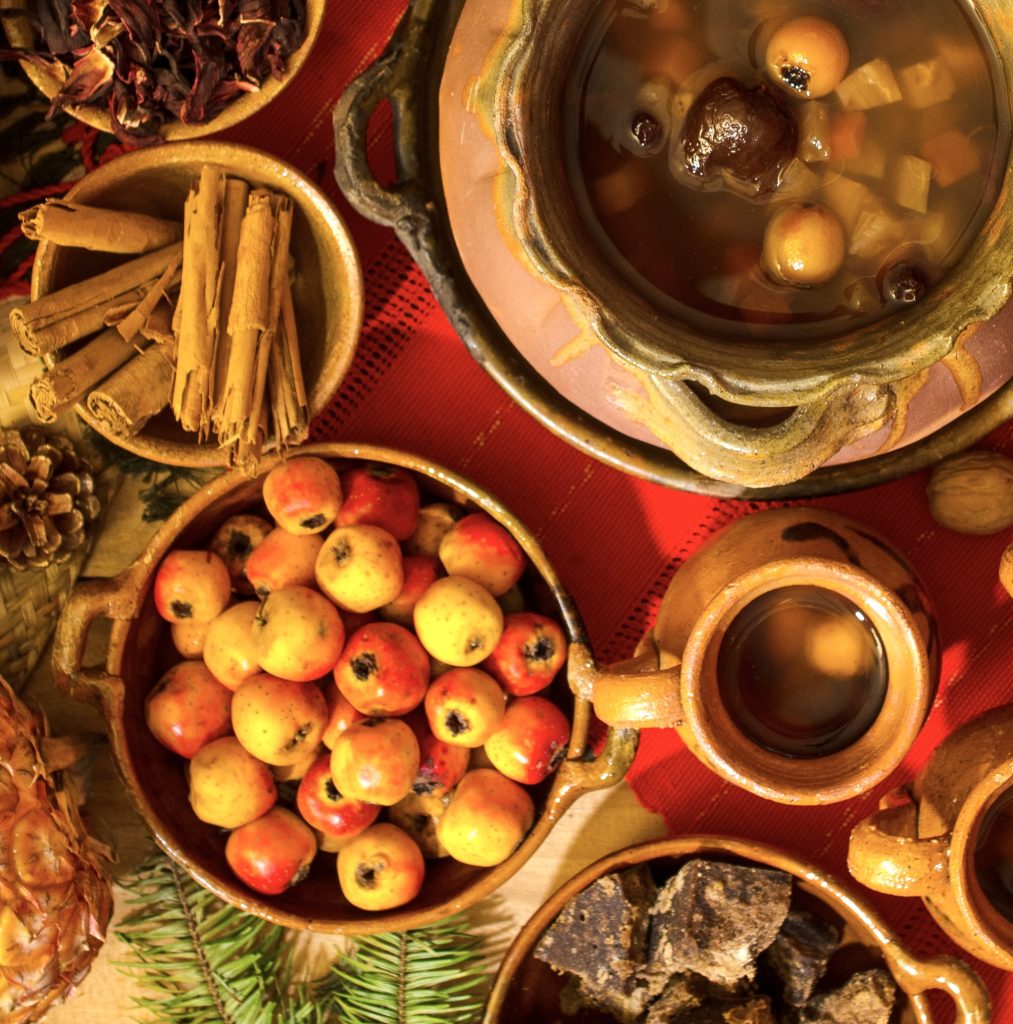
Manzanilla (tejocote or Mexican Hawthorn) is a small fruit with a sweet and tart flavor that is popular in Central American and Mexican cuisine. Its versatility and health benefits have been appreciated for generations, and it plays an essential role in the cultural and culinary traditions of these regions. Whether used in traditional dishes or as a natural remedy, manzanilla is a unique and valuable fruit with a rich history and cultural significance.
Health benefits of Tecojotes (manzanilla or Mexican Hawthorn)
Mexican Hawthorn , also known as manzanilla or tecojote, is not only delicious but also packed with health benefits. Tecojote root is also used as a dietary supplement.
High nutritional value
Tejocote fruits offer various health benefits, including antioxidants that help protect cells from damage caused by free radicals. They are also a good source of vitamin A, which supports healthy organ function, calcium for building strong bones and teeth, and several other nutrients like B vitamins, iron, and minerals.

Digestive health benefits
One of the main uses of hawthorn berry is for digestive health. It is believed to help improve digestion by increasing the secretion of digestive enzymes and promoting the movement of food through the digestive tract. This makes it helpful for conditions such as indigestion, bloating, and constipation. Hawthorn berry is also known to have a calming effect on the digestive system, making it beneficial for those with irritable bowel syndrome or other digestive disorders.
Improves cardiovascular health
In addition to its digestive benefits, hawthorn berry is also known to have a positive effect on cardiovascular health. It is believed to help improve blood flow and reduce inflammation, which can lower the risk of heart disease. Some studies have also suggested that hawthorn berry may help improve cholesterol levels and reduce the risk of atherosclerosis. Overall, this small but mighty fruit is a nutritious addition to any diet, providing both delicious flavor and numerous health benefits.
Recipe for Guatemalan manzanillas en miel
Manzanillas en dulce is a beloved traditional dessert in Guatemala, often enjoyed during the Lenten season and Semana Santa. Made with the seasonal manzanilla fruit, this sweet treat is a labor of love that is so easy to make. The result is a deliciously sweet and fruity dessert that is perfect for sharing with family and friends accompanied by a delicious glass of ponche de frutas or ponche de frutas.
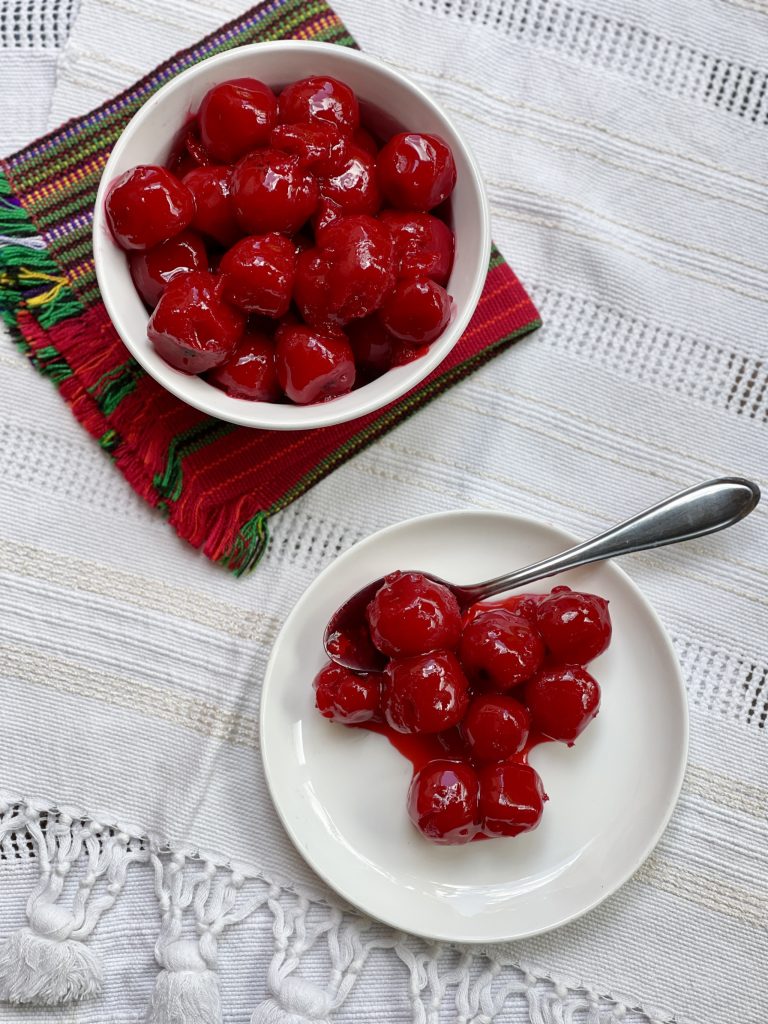
To make manzanillas en dulce, you will need ripe manzanillas, sugar, red food coloring, and optional cinnamon. This recipe yields approximately 100 manzanillas, so be sure to adjust the ingredient measurements accordingly if you are making a smaller batch.
Here is a step-by-step recipe for making manzanillas en miel:
Ingredients for manzanillas en dulce:
- 100 ripe manzanillas or tecojotes
- 4 lbs of sugar
- red food coloring
- 2 cinnamon sticks
- Water

Instructions for manzanillas en dulce:
- Wash the manzanillas thoroughly.
- In a large pot boil the manzanillas in water for about 40 minutes over low heat. There should be enough water to cover them.
- Remove the manzanillas from heat and let them cool in the water.
- Once the water has cooled to room temperature, remove the manzanillas from the water and peel off the skin using your hands.
- Strain the water from the first boiling to remove any remaining skin and return the peeled manzanillas to the same water.
- Add the sugar and cinnamon to the manzanillas and water and bring to a boil over low heat.
- Stir the mixture until the sugar has dissolved completely.
- Add red food coloring and continue stirring until the manzanillas have absorbed the red syrup and the mixture has thickened to the desired consistency. This can take up to 30 minutes.
- To check if the manzanillas are done, remove one from the red syrup and open one up to see if the fruit has absorbed the red color completely.
- Once the manzanillas are ready, remove them from the heat and let them cool.
- Serve the manzanillas en dulce chilled as a sweet and fruity dessert.
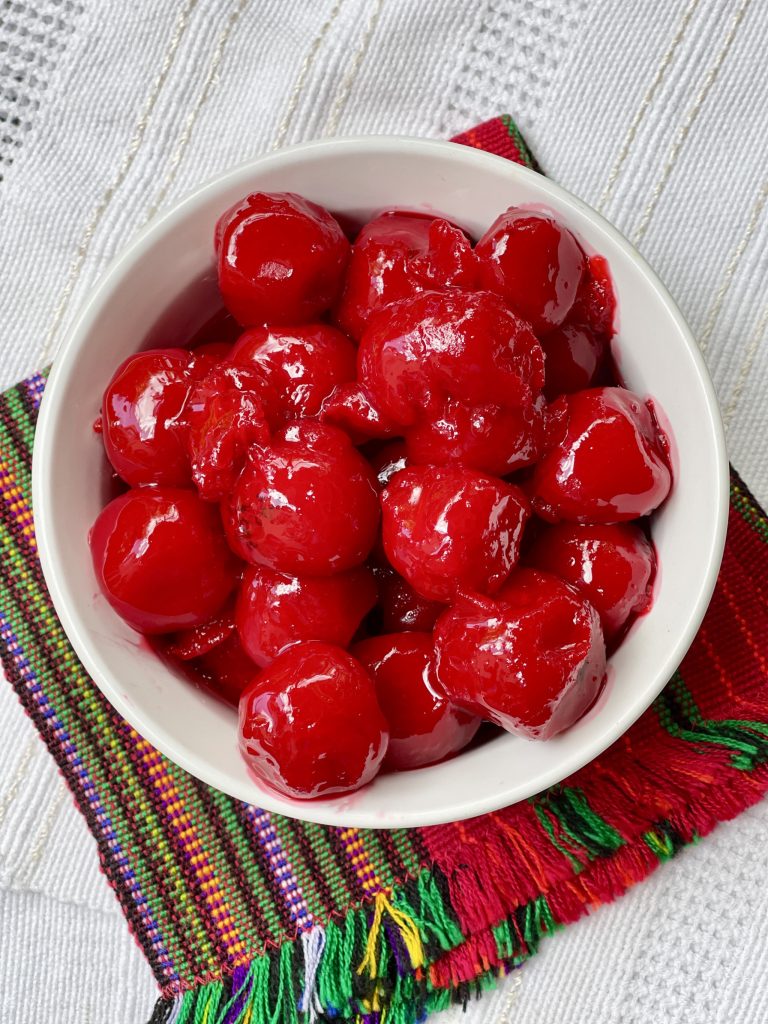
Making manzanillas en miel is a time-honored tradition in Guatemala that yields a delicious and unique dessert. While it may require some effort with all the peeling of the fruit the end result is a sweet treat that is well worth it. Whether you are enjoying it during the Lenten season or any other time of year, manzanillas en dulce is a delightful and memorable dessert that you and your loved ones are sure to enjoy.
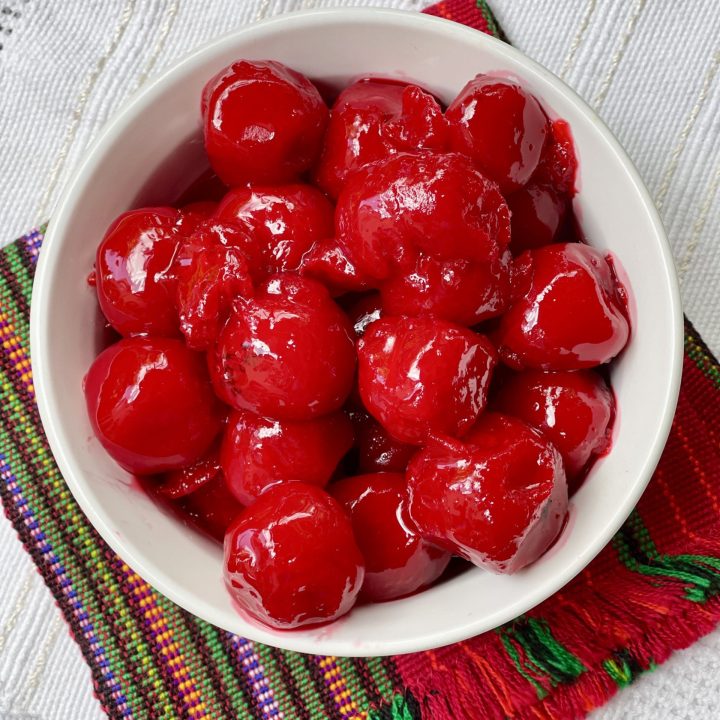
Manzanillas en Miel Recipe
Ingredients
- 100 ripe manzanillas or tecojotes
- 4 lbs of sugar
- red food coloring
- 2 cinnamon sticks
- Water
Instructions
- Wash the manzanillas thoroughly.
- In a large pot boil the manzanillas in water for about 40 minutes over low heat. There should be enough water to cover them.
- Remove the manzanillas from heat and let them cool in the water.
- Once the water has cooled to room temperature, remove the manzanillas from the water and peel off the skin using your hands.
- Strain the water from the first boiling to remove any remaining skin and return the peeled manzanillas to the same water.
- Add the sugar and cinnamon to the manzanillas and water and bring to a boil over low heat.
- Stir the mixture until the sugar has dissolved completely.
- Add red food coloring and continue stirring until the manzanillas have absorbed the red syrup and the mixture has thickened to the desired consistency. This can take up to 30 minutes.
- To check if the manzanillas are done, remove one from the red syrup and open one up to see if the fruit has absorbed the red color completely.
- Once the manzanillas are ready, remove them from the heat and let them cool.
- Serve the manzanillas en dulce chilled as a sweet and fruity dessert.
Other delicious Guatemalan Semana Santa desserts your are sure to love!
All of these traditional desserts are usually eaten during Semana Santa and Cuaresma. Weather you see the cucuruchos enjoying some or empanadas de manjar in Antigua Guatemala after carrying the processions or make some plátanos en mole at home to enjoy with family, these sweet treats are deeply connected with this religious holiday and it’s traditions.
- Plátanos En Mole. Looking for a dessert that’s both sweet and savory? Look no further than Platano en Mole, a beloved Guatemalan food that’s sure to satisfy any craving! Featuring ripe plantains smothered in a rich, aromatic mole sauce, this dish is a true feast for the senses. Whether you’re a seasoned foodie or just looking to try something new, Platano en Mole is a must-try dessert that’s sure to leave a lasting impression!
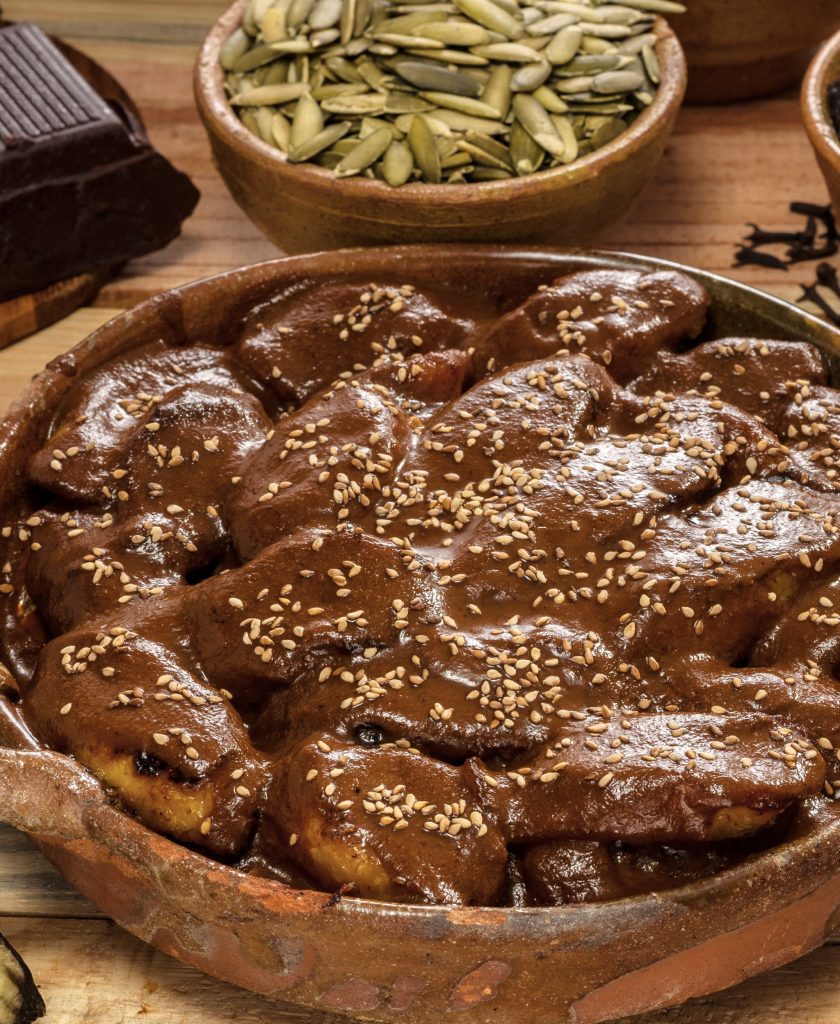
- Buñuelos. Buñuelos are bits of fried wheat-based dough, crisp on the outside and soft on the inside. Throughout Latin America, there are different versions of buñuelos; they can be round, flat, or even twisted strips of dough. In Guatemala, the buñuelos are covered in powdered sugar and served in a light syrup with a hint of anise.
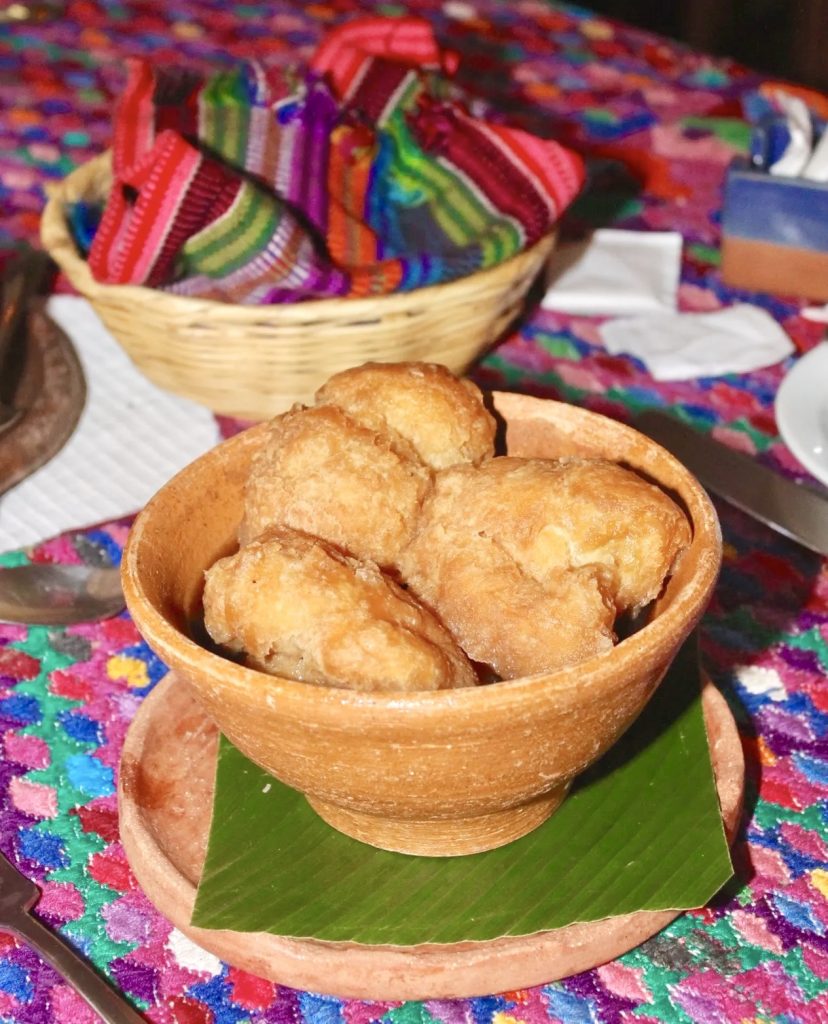
- Empanadas De Manjar De Leche (Filled With Custard). Empanadas de manjar are hand pie-like pastries filled with a milk-based creamy filling. If you want to surprise your loved ones with this delicious Guatemalan dessert, here is a quick recipe for you to prepare.
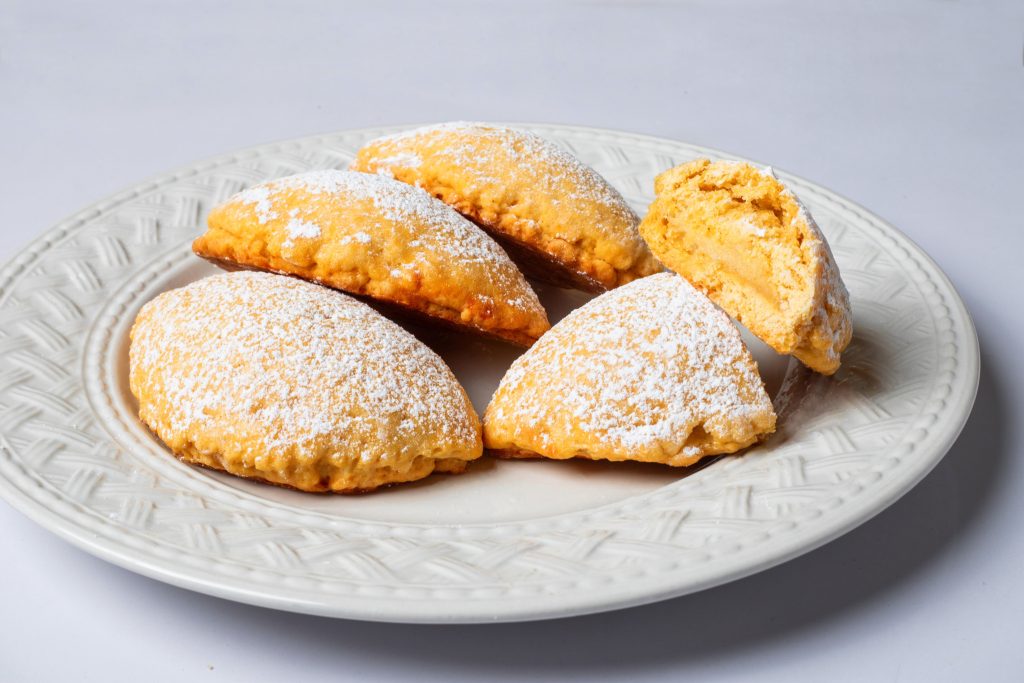
- Torrejas. Torrejas is a traditional Guatemalan dessert that is very popular at town fairs or as a street food. Similar to stuffed french toast, torrejas are common in many Latin American countries, and every country makes them a little different.




Thank you of the recipe! I saw tecojotes for sale at my local market and bought them on a whim. So far we’ve used the cooked, syrupy fruit in a salad and with yogurt and granola for breakfast. It’s mild, dense, and chewy, with a texture like quince (but without quince’s natural hint of spice). Always a pleasure to discover a new food!